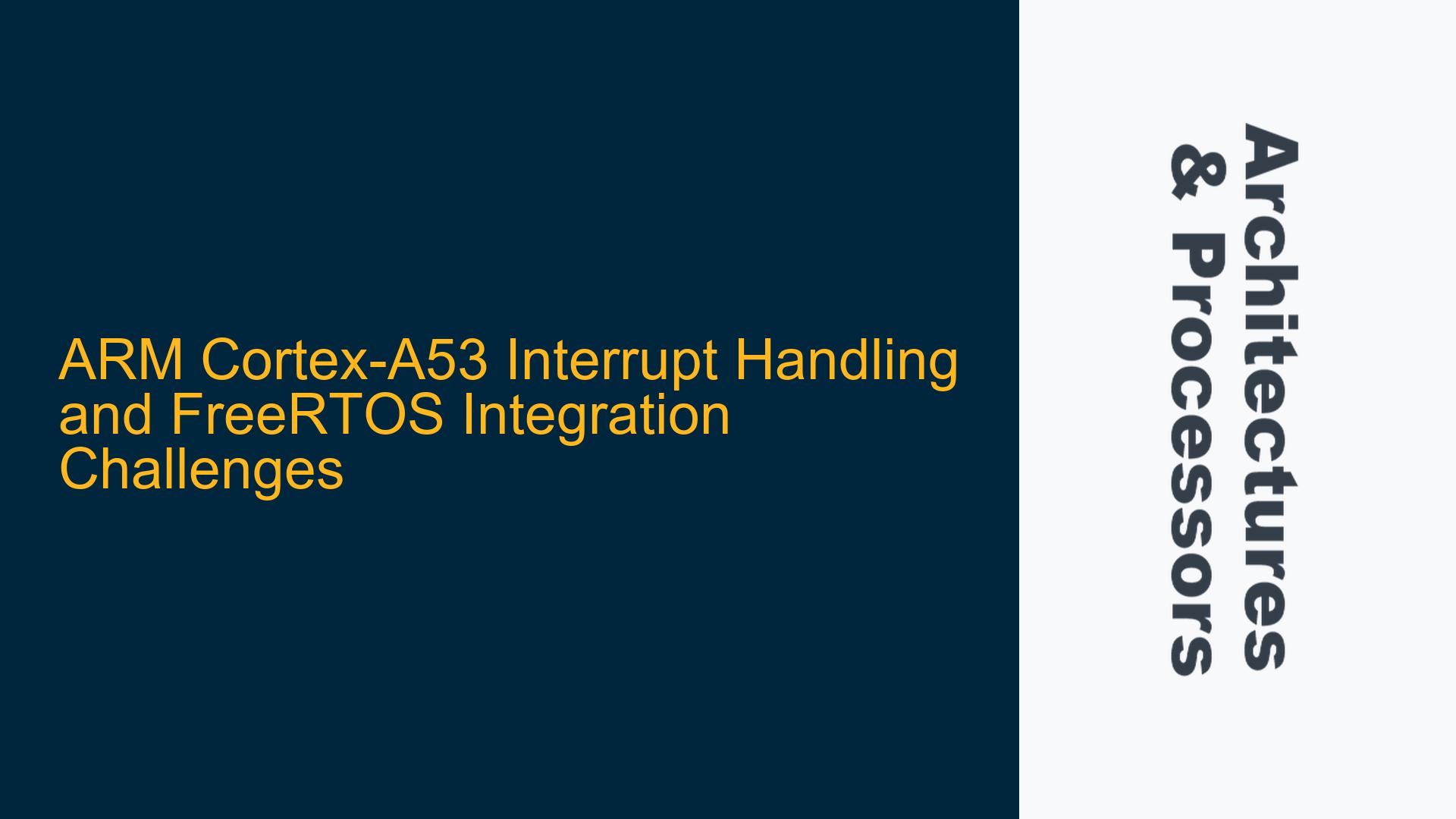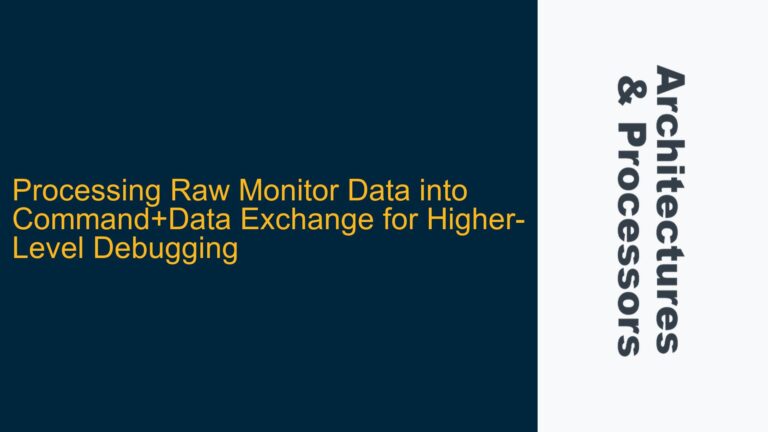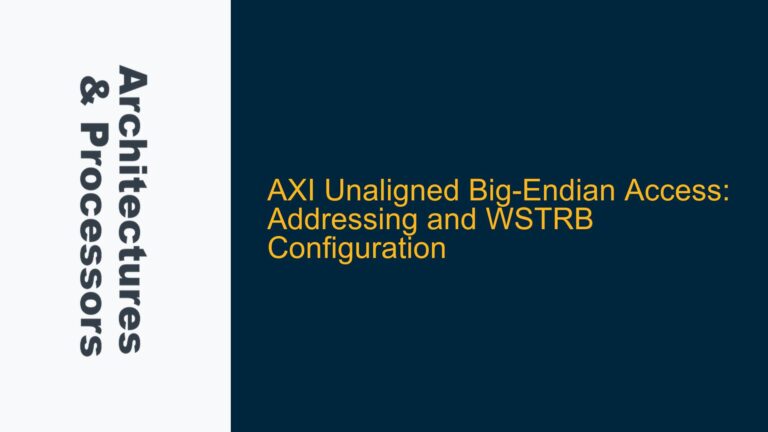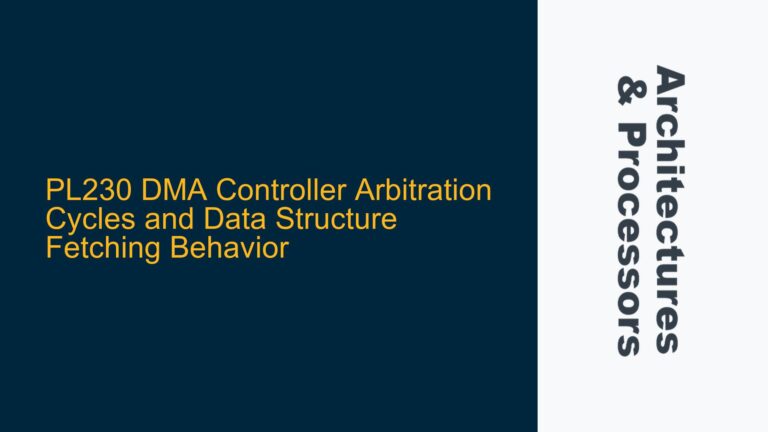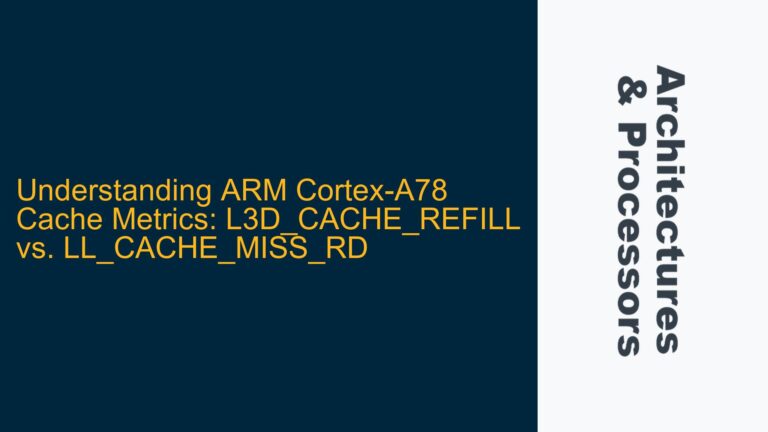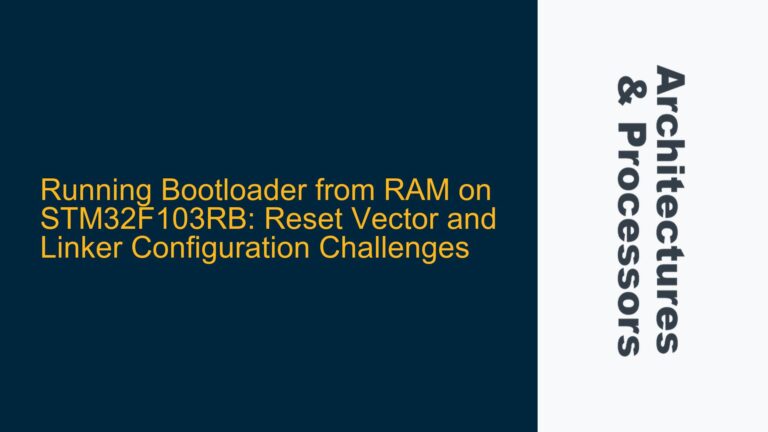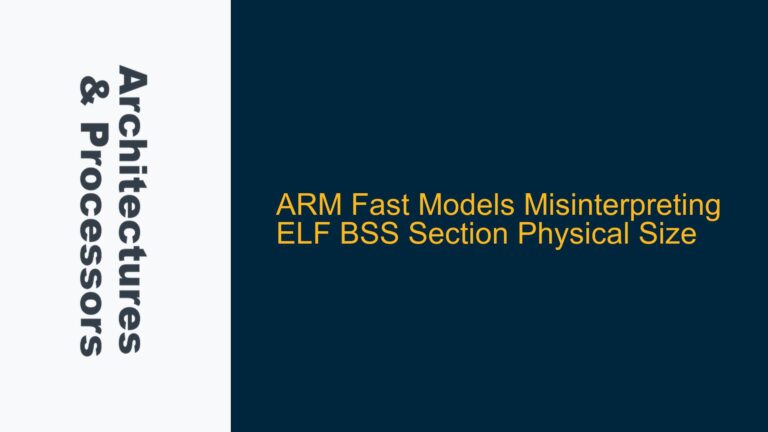ARM Cortex-A53 Interrupt Context Detection in FreeRTOS
The ARM Cortex-A53 processor, part of the ARMv8-A architecture, is widely used in embedded systems due to its balance of performance and power efficiency. When integrating FreeRTOS with the Cortex-A53, one common challenge is detecting whether the processor is currently executing in an interrupt context. This is particularly important for ensuring proper task scheduling, resource management, and avoiding race conditions. The Cortex-A53, unlike the Cortex-M series, does not have a dedicated register or hardware mechanism to directly indicate interrupt context. Instead, this information must be inferred from the state of the Generic Interrupt Controller (GIC) and the processor’s exception levels.
In FreeRTOS, the xPortInsideInterrupt() function is commonly used on Cortex-M processors to determine if the code is running in an interrupt context. This function typically checks the value of the Interrupt Program Status Register (IPSR) or similar hardware-specific registers. However, the Cortex-A53 does not provide an equivalent hardware feature, necessitating a software-based approach to achieve the same functionality. The absence of a direct equivalent to xPortInsideInterrupt() on the Cortex-A53 can lead to subtle bugs, especially when dealing with shared resources, nested interrupts, or real-time task scheduling.
The challenge is further compounded by the Cortex-A53’s support for multiple exception levels (EL0 to EL3), each with its own set of registers and execution states. Interrupts on the Cortex-A53 are typically handled at EL1 or EL2, depending on the system configuration. This multi-level exception model requires careful consideration when implementing interrupt context detection, as the processor’s state must be examined in a way that accounts for the current exception level and the state of the GIC.
GIC State Analysis and Exception Level Considerations
The Generic Interrupt Controller (GIC) plays a central role in managing interrupts on the Cortex-A53. The GIC provides registers that indicate the status of interrupts, including which interrupts are active, pending, or masked. By querying these registers, it is possible to infer whether the processor is currently handling an interrupt. However, this approach requires a deep understanding of the GIC architecture and its interaction with the Cortex-A53’s exception levels.
One possible cause of incorrect interrupt context detection is the failure to account for the GIC’s interrupt state registers. These registers, such as the GIC Distributor and GIC CPU Interface registers, provide information about the current interrupt state. For example, the GIC Interrupt Acknowledge Register (GICC_IAR) can be used to determine the interrupt ID of the currently active interrupt. If this register contains a valid interrupt ID, it indicates that the processor is in an interrupt context. However, this approach must be carefully implemented to avoid race conditions, especially in systems with nested interrupts or high interrupt rates.
Another consideration is the Cortex-A53’s exception levels. The processor can operate at four exception levels (EL0 to EL3), with interrupts typically handled at EL1 or EL2. The current exception level can be determined by reading the CurrentEL register, which provides a 2-bit field indicating the current exception level. When implementing interrupt context detection, it is essential to consider the current exception level, as the behavior of the GIC registers and the processor’s state may vary depending on the exception level.
Additionally, the Cortex-A53’s support for virtualization adds another layer of complexity. In systems with hypervisor support, interrupts may be handled at EL2, and the GIC state may be virtualized. This requires careful handling of the GIC registers and consideration of the hypervisor’s role in interrupt management. Failure to account for virtualization can lead to incorrect interrupt context detection, especially in systems with mixed interrupt handling at different exception levels.
Implementing Interrupt Context Detection Using GIC and Exception Level Checks
To implement interrupt context detection on the Cortex-A53, a combination of GIC state analysis and exception level checks is required. The following steps outline a robust approach to determining whether the processor is currently in an interrupt context:
First, the current exception level must be determined by reading the CurrentEL register. This register provides a 2-bit field that indicates the current exception level. If the processor is operating at EL0 (user mode), it is not in an interrupt context. If the processor is at EL1 or EL2, further checks are required to determine if an interrupt is being handled.
Next, the GIC state must be examined. The GIC Interrupt Acknowledge Register (GICC_IAR) can be read to determine the interrupt ID of the currently active interrupt. If the GICC_IAR contains a valid interrupt ID (i.e., not the special value indicating no active interrupt), it indicates that the processor is in an interrupt context. However, this check must be performed carefully to avoid race conditions, especially in systems with nested interrupts or high interrupt rates.
In addition to checking the GICC_IAR, the GIC Interrupt Status Register (GICC_ISR) can be used to determine the status of pending interrupts. If the GICC_ISR indicates that there are pending interrupts, it may suggest that the processor is in an interrupt context. However, this register alone is not sufficient for definitive interrupt context detection, as pending interrupts may not yet be active.
To ensure robust interrupt context detection, the following code snippet can be used as a starting point:
uint32_t xPortInsideInterrupt(void) {
uint32_t currentEL;
uint32_t interruptID;
// Read the Current Exception Level
asm volatile("mrs %0, CurrentEL" : "=r" (currentEL));
// Check if the processor is at EL1 or EL2
if ((currentEL & 0x3) != 0) {
// Read the GIC Interrupt Acknowledge Register
interruptID = GICC_IAR;
// Check if a valid interrupt ID is present
if (interruptID != GIC_SPURIOUS_INTERRUPT) {
return 1; // In interrupt context
}
}
return 0; // Not in interrupt context
}
This code snippet reads the CurrentEL register to determine the current exception level. If the processor is at EL1 or EL2, it reads the GICC_IAR to check for a valid interrupt ID. If a valid interrupt ID is found, the function returns 1, indicating that the processor is in an interrupt context. Otherwise, it returns 0.
It is important to note that this implementation assumes a non-virtualized system with interrupts handled at EL1 or EL2. In systems with hypervisor support or mixed interrupt handling at different exception levels, additional checks may be required to ensure accurate interrupt context detection.
In conclusion, detecting interrupt context on the ARM Cortex-A53 requires a combination of GIC state analysis and exception level checks. By carefully examining the GIC registers and the processor’s exception level, it is possible to implement a robust interrupt context detection mechanism similar to the xPortInsideInterrupt() function available on Cortex-M processors. This approach ensures proper task scheduling, resource management, and avoidance of race conditions in FreeRTOS-based systems running on the Cortex-A53.
